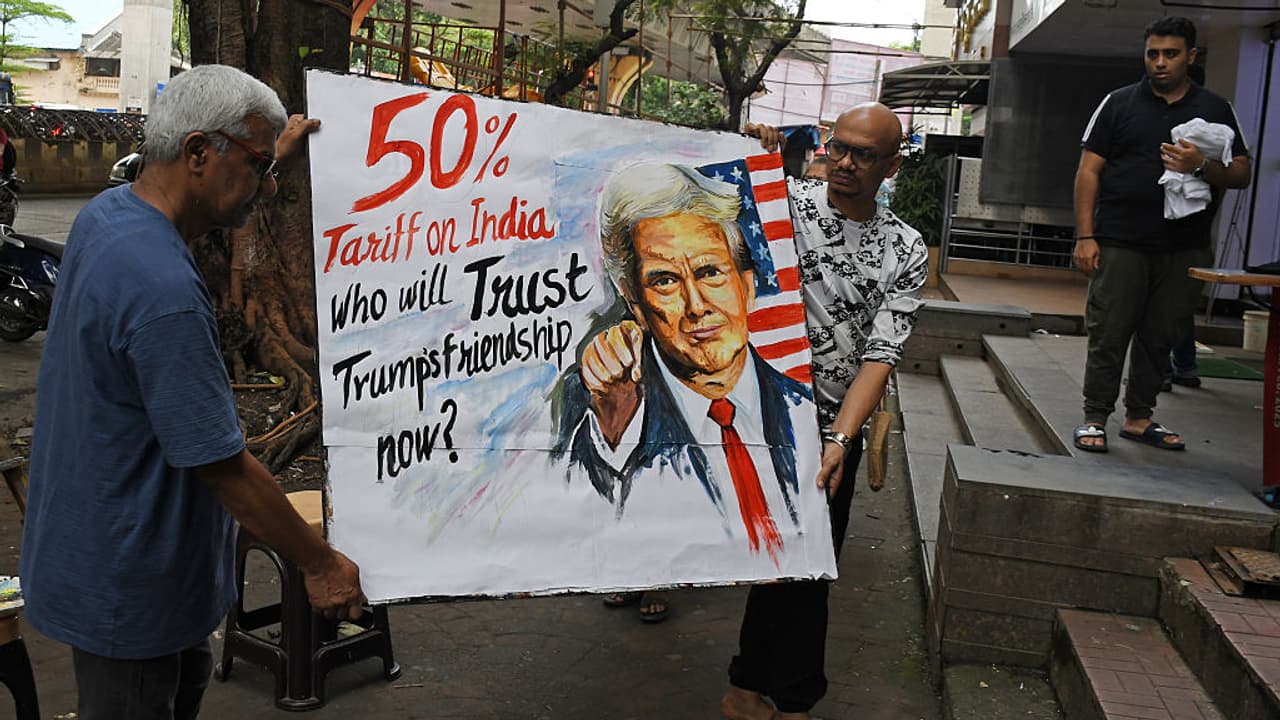Trump’s escalating tariffs are backfiring, diminishing US global influence and pushing nations toward new alliances. Facing 50% tariffs, India and Brazil are bolstering domestic production and seeking alternative markets.
US President Donald Trump’s second term has shifted from deal-making to demolition, targetting allies and rivals alike. His latest move, a sweeping tariff shock, has slapped 50% duties on Indian and Brazilian goods, hiked levies on European metals, and renewed curbs on Chinese tech exports.
The White House frames it as a bold reset of the global economic system. Aide Peter Navarro even claimed Trump “deserves a Nobel Prize in economics for proving the US can bend global commerce to its will.”
But the numbers tell a very different story.
America’s Shrinking Trade Clout
In 2000, the US accounted for 20% of global imports. Today, that number is down to 12%, according to The Economist. Instead of forcing the world into alignment, Trump’s tariffs are accelerating the shift away from America.
- India: Facing a 50% tariff wall, New Delhi is doubling down on its Made in India program.
- Brazil: Announced a $6 billion stimulus plan to shield exporters.
- Canada & Japan: Retaliating with their own tariffs.
- South Korea: Subsidizing firms to scout new markets in the Middle East and Latin America.
One South Korean official summed it up: “The first step is to make concessions to America. The second is to look elsewhere.”
Why It Matters:
The tariffs are pushing countries into new alignments. On August 31, Prime Minister Narendra Modi will meet Chinese President Xi Jinping in Beijing, with Russia quietly backing the summit.
This potential Russia-India-China (RIC) revival, first imagined in the 1990s, is gaining traction as Trump isolates America.
Russia seeks strategic relief from sanctions and Ukraine fatigue.
China wants market expansion as US pressure mounts.
India seeks leverage amid tariff blows and supply chain uncertainty.
But trust is fragile. Border tensions with China linger, and India remains wary of Beijing’s ties with Pakistan. Still, necessity is nudging New Delhi closer.
The Big Picture:
- For the first time since World War II, America’s allies are hedging against US unreliability.
- Germany & Japan are investing in alternative security arrangements.
- Brazil is rallying BRICS to deepen trade without Washington.
- Trade math: The US now buys just 1/7 of Brazil’s exports, down from 1/4 two decades ago. In contrast, BRICS trade now exceeds trade with America — and the gap is widening.
“Relations with Brazil are at their best in history,” Xi Jinping declared after a recent call with President Lula da Silva.
India’s Strategic Pivot
For India, the tariffs sting, especially as they are higher than those on Chinese goods in some categories. Fitch Ratings warns that the duties could “reduce India’s ability to benefit from supply chain shifts out of China.”
PM Modi responded with a fiery speech in Ahmedabad, promising to protect small entrepreneurs and farmers from global shocks.
“My government will never let any harm come to the small entrepreneurs, farmers, and animal keepers,” PM Modi declared. “No matter how much pressure comes, we will keep increasing our strength to withstand.”
Behind the scenes, India has hired Mercury Public Affairs, a lobbying firm with close ties to Trump’s inner circle, to manage Washington’s fallout.
Between the Lines:
Despite the noise, the RIC triangle remains fragile:
- India’s exports to the US still dwarf trade with Russia or China (over $77.5 billion in 2024).
- Strategic distrust persists over Chinese tech, border disputes, and Beijing’s Pakistan tilt.
- Symbolically, India continues restricting Chinese investment in sensitive sectors.
What’s Next
- August 27: Trump’s 50% tariff on Indian goods officially takes effect.
- August 31: Modi-Xi summit in Beijing; Russia pushing for a trilateral RIC session.
- Sept–Dec 2025: US midterm campaigns heat up; Republican underperformance could weaken Trump further.
If Trump loses the midterms, he could face three years of lame-duck geopolitics. If America’s global order unravels, history may remember him as the president who dismantled US clout rather than rebuilt it.
